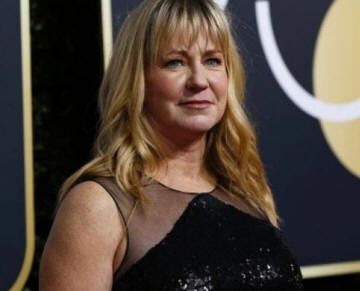
The Great Smoky Mountain Journal
Source: Fox News
Posted: Tuesday, January 01, 2019 02:30 PM
Former DA In Oregon: Disgraced Skater Tonya Harding "Involved Up To Her Neck Right From Day One" On Kerrigan Attack

Norman Frink, a former Multnomah County district attorney who headed the
investigation into Harding's alleged involvement with the attack, told
People the disgraced skater was involved in the suspicious attack on
Kerrigan despite her claims she was not.
"[Harding] was involved up to her neck right from day one," Frink
alleged.

Kerrigan was hit in the knee with a police baton just seven weeks before
the 1994 Winter Olympics. Shane Stant was later identified as the man
who clubbed Kerrigan in the knee as the ice skater walked off the rink
from practice on Jan. 6, 1994. The plot was set up by Harding’s
ex-husband Jeff Gillooly, Brian Sean Griffith and Derrick Smith.
Gillooly and Griffith pleaded guilty to “racketeering” in connection
with the attack. Harding’s ex-husband was forced to pay $100,000 and was
sentenced to two years in prison. Griffith, Smith and Stant were each
sentenced to 18 months in prison.
For years, Harding has claimed she was not involved in the attack that
injured Kerrigan but did not keep her from competing in the Olympic
Games. Kerrigan won a silver medal for her skating performances while
Harding did not qualify for any medals.
Gillooly told FBI agents Harding called for the attack. FBI documents
stated Gillooly alleged he told Harding in December 1993 that “we should
go for it (the attack).”
“Okay, let’s do it,” Harding allegedly
said.
A significant piece of evidence backed up Gillooly’s statement: a
handwritten note reportedly written by Harding stating where Kerrigan
would be practicing.
The 2017 film “I, Tonya” which centered around the scandal, showed
Margot Robbie, who portrayed Harding in the film, asking the judge to
put her in jail instead of banning her from ice skating.
However, Frink said that was not accurate.
“She could have gone to prison instead if she wanted to. This is what
she wanted to do at the time,” Frink told People. “We would have gladly
accepted an alternative sentence where she got the same as everyone
else. There’s no point in her whining about the choices she made back
then now.”
Frink said Harding did not receive jail time because of the lack of
evidence.
“The only reason she didn’t go to prison with the other people, although
the quality of evidence was good, it wasn’t as good as the other
people,” Frink said. “We made a decision, as you do often in criminal
cases when you don’t have iron-clad evidence, we made a compromise.”
Frink said he has not seen the Academy Award-nominated film but saw
Harding in ABC’s “Truth and Lies” special where the ice skater admitted
on air that she “knew something was up.”
Harding told ABC she did not tell Gillooly to go through with the attack
despite his testimony but she alleged she “overheard” the men talking
about “how maybe we should take somebody out so we can make sure she
gets on the team.”
“I go, ‘what the hell are you talking about?'” Harding alleged.
“It was a startling admission, because it was the first time she ever
admitted something that gets closer to the truth than what she usually
says,” Frink said. “With Tonya Harding, the line between truth and
fiction is always blurry.”
In March 1994, Harding pleaded guilty to “conspiracy to hinder
prosecution” - meaning she “knew who had done the attack but only
afterward and she didn’t report it immediately” - and was sentenced to
three years of probation, 500 hours of community service and was forced
to pay a $160,000 fine, The New York Times reported. She was banned for
life from the U.S. Figure Skating Association in June 1994, Cosmopolitan
reported.
In an interview with The New York Times that was published in January
2018, Harding told the paper she knew the attack would follow her for
the rest of her life.
I knew that this would be with me for the rest of my life,” Harding
said.

